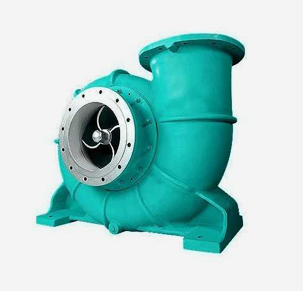Khmer
- Afrikaans
- Albanian
- Amharic
- Arabic
- Armenian
- Azerbaijani
- Basque
- Belarusian
- Bengali
- Bosnian
- Bulgarian
- Catalan
- Cebuano
- Corsican
- Croatian
- Czech
- Danish
- Dutch
- English
- Esperanto
- Estonian
- Finnish
- French
- Frisian
- Galician
- Georgian
- German
- Greek
- Gujarati
- Haitian Creole
- hausa
- hawaiian
- Hebrew
- Hindi
- Miao
- Hungarian
- Icelandic
- igbo
- Indonesian
- irish
- Italian
- Japanese
- Javanese
- Kannada
- kazakh
- Khmer
- Rwandese
- Korean
- Kurdish
- Kyrgyz
- Lao
- Latin
- Latvian
- Lithuanian
- Luxembourgish
- Macedonian
- Malgashi
- Malay
- Malayalam
- Maltese
- Maori
- Marathi
- Mongolian
- Myanmar
- Nepali
- Norwegian
- Norwegian
- Occitan
- Pashto
- Persian
- Polish
- Portuguese
- Punjabi
- Romanian
- Russian
- Samoan
- Scottish Gaelic
- Serbian
- Sesotho
- Shona
- Sindhi
- Sinhala
- Slovak
- Slovenian
- Somali
- Spanish
- Sundanese
- Swahili
- Swedish
- Tagalog
- Tajik
- Tamil
- Tatar
- Telugu
- Thai
- Turkish
- Turkmen
- Ukrainian
- Urdu
- Uighur
- Uzbek
- Vietnamese
- Welsh
- Bantu
- Yiddish
- Yoruba
- Zulu
Telephone: +86 13120555503
Email: frank@cypump.com
វិច្ឆិកា . 21, 2024 06:46 Back to list
design and analysis of a double suction split case ...
Design and Analysis of a Double Suction Split Case Pump
In the world of fluid mechanics and hydraulic systems, the design and functionality of pumps play a crucial role in various applications. Among these, the double suction split case pump stands out for its efficiency and reliability. This type of pump, engineered to handle large volumes of fluids, is commonly utilized in water supply systems, irrigation, fire fighting, and industrial applications. This article explores the design principles, operational mechanisms, and analytical considerations involved in creating a double suction split case pump.
Understanding the Double Suction Split Case Pump
The double suction split case pump is characterized by its ability to draw fluid from both sides of the impeller, thus effectively balancing hydraulic forces and minimizing vibration. This design typically features a horizontal split casing, which allows for easy maintenance and disassembly. The dual suction configuration leads to improved efficiency as it reduces the axial thrust that single-suction pumps often experience, making it particularly suitable for large-scale applications where high flow rates are essential.
Key Design Features
1. Casing Design The split casing provides an inherent advantage by allowing for easy access to the impeller and other internal components. This design reduces the operational downtime during maintenance procedures. Additionally, the casing shape is optimized to minimize turbulence and pressure losses as the fluid flows through the pump.
2. Impeller Design The impeller is a critical component in achieving the desired flow rate and pressure. In double suction pumps, the impeller is usually designed with backward-curved blades that enhance performance and efficiency. The design ensures that fluid enters the impeller from both sides, which balances the pressures, ultimately leading to reduced energy losses.
3. Suction Eye and Volute The suction eye is the entry point for fluid into the impeller. In double suction designs, the eye is carefully shaped to ensure uniform flow distribution, minimizing the risk of cavitation—a phenomenon where vapor bubbles form and can cause damage. The volute, which is the spiral casing surrounding the impeller, is designed to convert kinetic energy into pressure efficiently.
design and analysis of a double suction split case ...

4. Material Selection Selecting the right material is crucial for ensuring the durability and reliability of the pump. Common materials include cast iron, stainless steel, and bronze, chosen based on the properties of the fluid being transported, operating conditions, and environmental factors.
Analysis and Performance Optimization
The analysis of a double suction split case pump involves several methodologies, including computational fluid dynamics (CFD) simulations and performance testing. CFD allows engineers to visualize fluid flow within the pump, identify potential areas of turbulence or blockage, and optimize the design for enhanced performance.
1. Performance Characteristics The performance of a double suction pump is often characterized by its pump curve, which illustrates the relationship between flow rate and head. Understanding this curve helps engineers determine the pump's operating range and efficiency at various conditions.
2. Efficiency Evaluation The efficiency of a pump is typically defined by its hydraulic efficiency, volumetric efficiency, and overall efficiency. By analyzing these parameters, engineers can make informed decisions about potential upgrades or modifications to the pump design to achieve better performance.
3. Vibration Analysis Since double suction pumps are designed to minimize axial thrust, a thorough vibration analysis is critical. Excessive vibrations can lead to premature wear and tear of components. Regular monitoring and analysis can help identify issues early and ensure the longevity of the pump.
Conclusion
The design and analysis of double suction split case pumps represent a significant field of study within mechanical and hydraulic engineering. These pumps not only exemplify advanced engineering principles but also highlight the importance of efficient fluid transport in various industries. As technologies advance, the methods for analyzing and optimizing these pumps continue to evolve, ensuring they meet modern demands for efficiency and reliability. Ultimately, understanding the intricate balance of design, analysis, and performance in double suction split case pumps will lead to better outcomes in water management and industrial applications, fostering sustainable practices in fluid handling.
-
China Small Slurry Pump Manufacturer - High Efficiency Small Centrifugal Slurry Pumps for Mining & Industry
NewsJun.24,2025
-
Custom Drilling Mud and Slurry Pump Supplier - High Efficiency, Tailored Solutions
NewsJun.10,2025
-
Supply Vertical Submersible Sewage Pump High-Efficiency WQ/QW Pumps Supplier
NewsJun.10,2025
-
Premium Sewage Ejection System & Pumps Efficient Waste Removal
NewsJun.09,2025
-
Premium Wholesale Slurry Pump Impellers Durable & Efficient Slurry Handling
NewsJun.09,2025
-
Top Sewage Pump Companies Durable Industrial Solutions for Efficiency
NewsJun.09,2025










